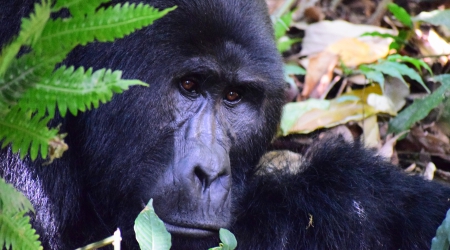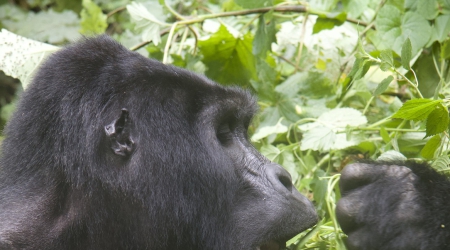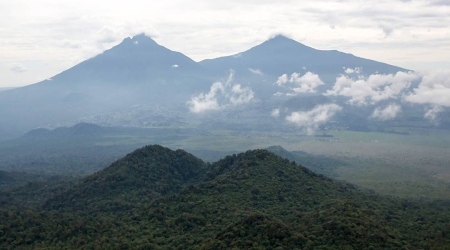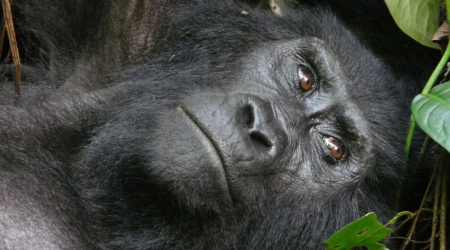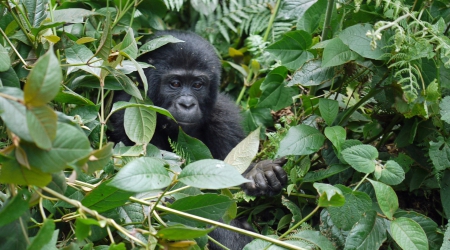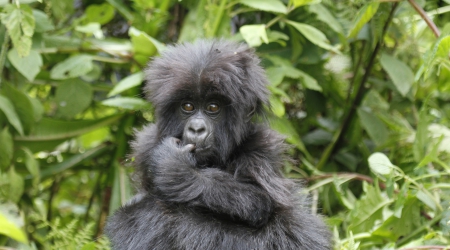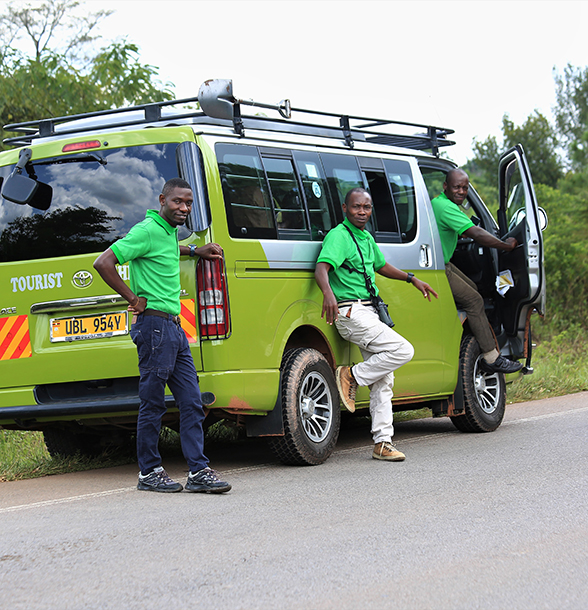The enormous tropical jungles of African continent are home to the largest ape species in the world – gorilla. They are social beings that live in groups / families under the leadership of a dominating alpha male with silvery color that cover his back, known as a silverback. While the silverback protects the group’s safety and juveniles spend majority of their daytime playing while mothers nurse the infants.
These apes share up to 98% of human DNA, behave similarly to humans and contain over 25 different echoes, each of which has a special meaning for the group. Being able to observe them during the rainy season is a unique experience. Gorillas have a thick coat of fur on their bodies, which aids in temperature regulation in cold conditions.
By choosing the rainy season, you can discover what life is like for gorillas when it rains, receive discounts on accommodation, and other amazing offers by tour operators. Other advantages of trekking in the rainy season include presence of fewer tourists in the park which reduces traffic, clear views of the landscape and an opportunity to take beautiful pictures of the apes in the shades of thick vegetation. Rainy weather brings with it the obstacle of slick terrain and mud, but it does not lower the level of enjoyment. It can rain at any time of the day, but only lasts for a short while, allowing the trekking activity to continue in the event that it gets too deep in the forest.
It is safe, doable and unforgettable for tourists to make it to the critically endangered mountain gorillas in the lush African jungles. It all comes down to love and passion for gorillas. In the forest, rain is unpredictable. For a few hours, it rains, then it stops before it starts to shine again. Gorillas remain in the park regardless of the intensity of down pour and your trekking time is less affected. Only on the African continent – Virunga Mountain range that runs through Uganda, Rwanda and Democratic Republic of Congo, are gorillas safely inhabited.
Gorilla trekking is possible in the national parks of Kahuzi-Biega, which is home to the enormous eastern lowland gorillas, Virunga national park which is located in the eastern part of Democratic Republic of Congo, Volcanoes National Park in the north-eastern part of Rwanda, Bwindi Impenetrable National Park and Mgahinga Gorilla National Park both located in the south-western part of Uganda.
Pre-trekking briefing is conducted by knowledgeable head ranger guide who walk tourists through the activity dos and don’ts in all these places, which are open to guests from very early in the morning.
Walking across a mountainous environment highlighted by hills, rich greenery and a mountain backdrop is required for gorilla trekking. The hiking exercise lasts between two and eight hours, depending on your pace and distance the apes have traveled. Once you’ve located them, you have an hour to take pictures, ask the ranger guides for more information about the apes and observe silverbacks guarding the family, mothers caring for the young ones and infants playing. Gorillas are vegetarians who only eat fruits, stems, roots and on some occasions, small insects.
March through early May and October to November are distinctive rainy months in Uganda. About two hours of rain are followed by clearing skies and some sun. Rainstorms might last for several hours. On the day of gorilla trekking, there is a chance that it won’t rain, but cloudiness, muddy terrain and chilly weather can’t be counted out. During the rainy season, gorillas are frequently sighted.
What to carry during the Rainy Season?
Choosing what to pack for a vacation is an experience of itself for a traveler. These and other things make up the supplies you’ll need for your trip: raincoats to keep you warm under rain, a walking stick to keep you out of the mud, insect repellents, long-sleeved shirts, water-resistant hiking boots, hand gloves to protect your hands again thorny shrubs, water container to quench thirst and more.
Binoculars for viewing far-off primates, a professional camera for taking high-quality pictures, travel documents and a trekking permit are additional items. A gorilla permit is required for anyone planning to interact with apes. It is given to people who are older than 15 years old. For Rwanda, it costs $1500 per permit; Democratic Republic of the Congo, it costs $400 and for Uganda, it costs $700.
Gorilla trekking in the wet season is a special experience. Because of the experience of taking classic gorilla images, enjoying discounts, less congestion in the park and more. You can also go on game drives, boat cruise, birdwatching, and several other outdoor activities during a vacation. Investigate the pristine savannah parks of Africa in search of your gorilla cousins.




